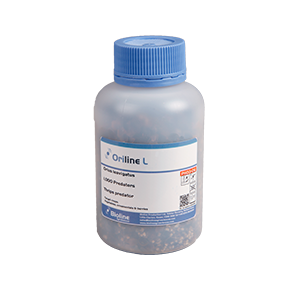Oriline products contain the predatory bug Orius, which has a long history of providing effective and reliable thrips control in a range of protected crops. Orius serves as a standard preventive treatment for thrips, particularly Western Flower Thrips, Frankliniella occidentalis.
The Oriline product range consists of three products, each tailored to the country and the use required.
Key Features
- Orius is the only biological control agent that kills adult thrips.
- Can kill up to 80 adult thrips per day (while only feeding on a few).
- Establishes well on pollen-rich crops.
- Feeding Ephestia eggs (Bug Food E) will enhance the establishment of Orius due to increased fecundity.
- All five Orius nymph stages are also predatory and adults can fly.
- Considered a generalist predator it will also feed on mites, moth eggs and other pests.
- Takes 4 to 8 weeks to establish a population.
Main uses
- Western Flower thrips
- Onion thrips
- Other thrips spp
- Moth eggs
- TSSM (Two Spotted Spider Mite)






